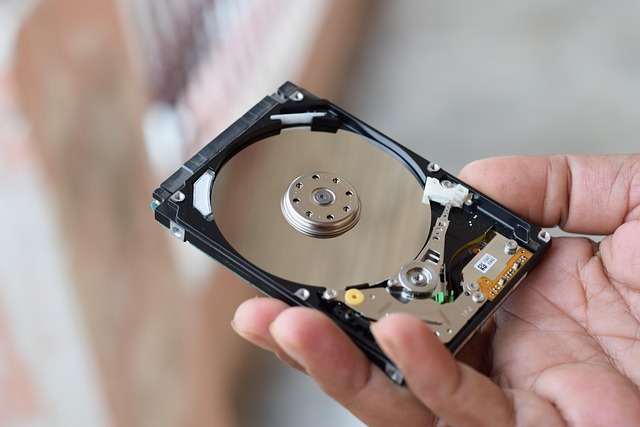This text provides a guide on performing hardware replacements in computers, focusing on common issues like slow computers due to outdated RAM or failing hard drives. It suggests simple solutions such as installing an SSD. The process involves structured steps including identification, tool gathering, safety measures, component removal and installation, connection checks, and verification of functionality. Post-replacement tips for optimizing performance include driver updates, startup program management, cleaning temporary files, monitoring resource usage, and temperature control to ensure continuous optimal performance from new components.
In the realm of computer maintenance, efficient hardware repair and upgrades are essential skills for any tech-savvy individual. This article guides you through the process, focusing on simple yet effective solutions for common hardware issues. From identifying problems like slow processors or faulty RAM to navigating hardware replacements, we provide step-by-step instructions. Learn how to maximize your computer’s performance post-upgrades with expert tips, ensuring your machine runs smoothly and efficiently. Discover the secrets to successful hardware replacement and take control of your tech needs.
- Understanding Common Hardware Issues and Their Simple Solutions
- Efficient Steps for Successful Hardware Replacement
- Maximizing Computer Performance After Upgrades: Tips and Tricks
Understanding Common Hardware Issues and Their Simple Solutions

Common hardware issues can often be simple to diagnose and fix, especially for those with a bit of technical knowledge. One of the most frequent problems is a slow computer due to an outdated or faulty RAM module. Upgrading or replacing this component can significantly improve your machine’s performance. Another prevalent issue is a failing hard drive, which can cause system crashes and data loss. A simple hardware replacement, in this case, installing a new solid-state drive (SSD), can resolve these problems and ensure smoother operations.
These quick fix solutions are not only cost-effective but also time-saving, especially when you consider the potential downtime caused by major system failures. Many hardware replacements, such as adding more RAM or swapping out an old hard drive for an SSD, can be accomplished in just a few steps, allowing users to get back to their tasks promptly without requiring extensive technical expertise.
Efficient Steps for Successful Hardware Replacement

When undertaking hardware replacements, a systematic approach ensures success. Begin by identifying the specific component requiring upgrade or replacement, gathering necessary tools and parts, and creating a checklist to stay organized. This prepares you for the process, minimizing potential errors.
Next, power down your computer safely and unplug all cables to avoid damage. Use anti-static wrist straps to protect sensitive hardware. Carefully remove the old part, keeping track of screws and connectors. Install the new component, ensuring proper alignment and secure attachment. Double-check connections before reconnecting power and booting up to verify functionality.
Maximizing Computer Performance After Upgrades: Tips and Tricks

After a hardware replacement or upgrade, optimizing your computer’s performance involves several simple yet effective tips. Firstly, ensure that all drivers are up-to-date, as outdated drivers can hinder the smooth operation of new components. Regularly check for updates and install them promptly to maintain optimal performance. Secondly, manage startup programs wisely. Disabling unnecessary applications from running at boot-up can significantly improve system responsiveness. You can do this through your computer’s settings or task manager.
Additionally, consider cleaning up temporary files and outdated software regularly. These remnants can slow down your system over time. Utilize built-in tools like Disk Cleanup or third-party utilities to remove unneeded files and programs. Also, keep an eye on your computer’s health by monitoring resource usage and temperature. Tools like Task Manager (Windows) or Activity Monitor (Mac) help identify any performance bottlenecks, allowing you to take necessary actions, such as closing resource-intensive applications or checking for hardware issues.
In conclusion, efficient computer hardware replacement and upgrades are within reach for anyone with a basic understanding of common issues and straightforward steps. By addressing problems proactively and following simple solutions, users can significantly improve their machine’s performance. Whether it’s swapping out faulty components or installing newer, more powerful ones, these practices ensure optimal computing experiences without the need for complex technical expertise. For a smoother process, consider the efficient steps outlined in this article to achieve successful hardware replacements and maximize your computer’s potential.
